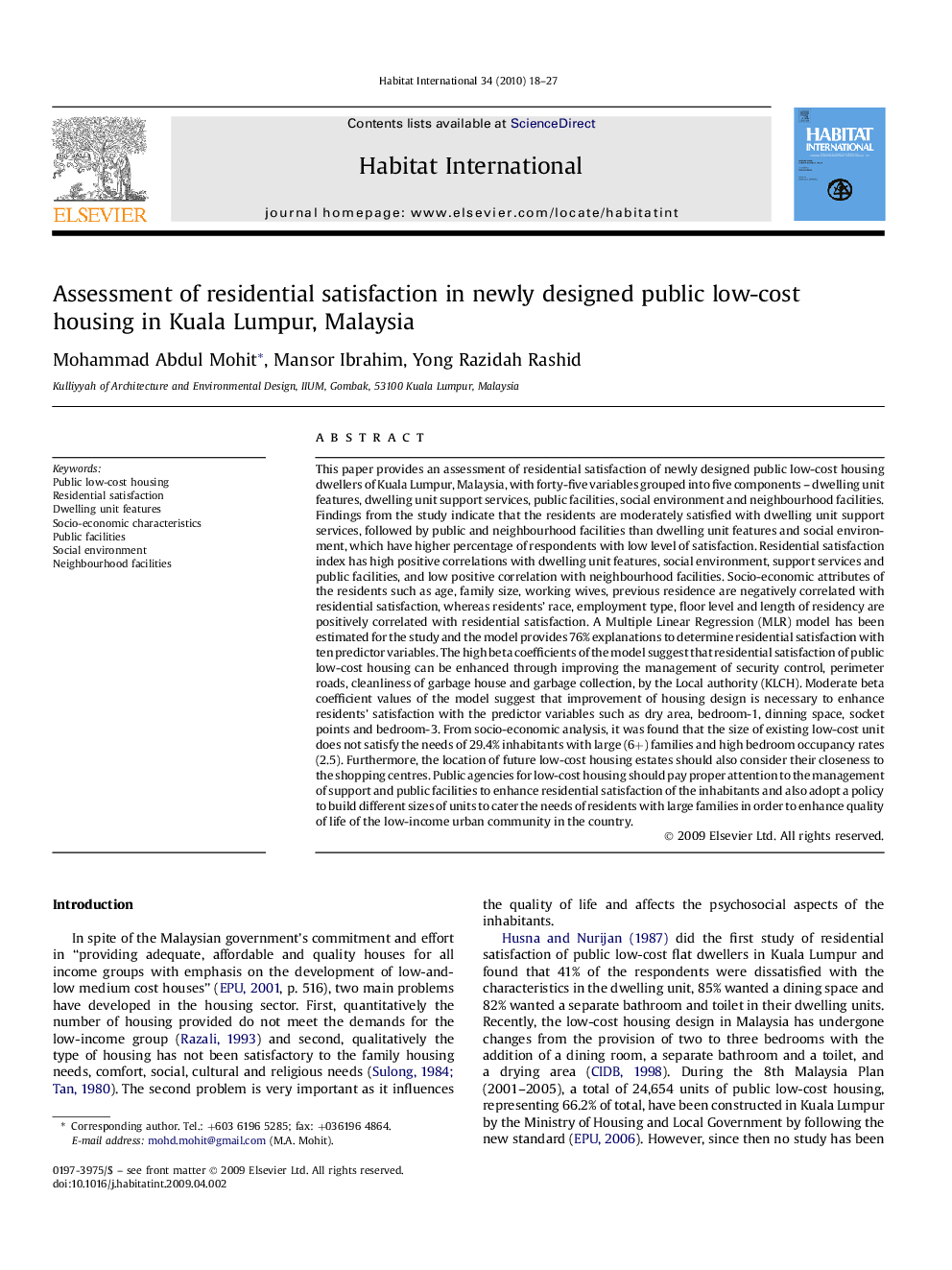| کد مقاله | کد نشریه | سال انتشار | مقاله انگلیسی | نسخه تمام متن |
|---|---|---|---|---|
| 1048328 | 945338 | 2010 | 10 صفحه PDF | دانلود رایگان |

This paper provides an assessment of residential satisfaction of newly designed public low-cost housing dwellers of Kuala Lumpur, Malaysia, with forty-five variables grouped into five components – dwelling unit features, dwelling unit support services, public facilities, social environment and neighbourhood facilities. Findings from the study indicate that the residents are moderately satisfied with dwelling unit support services, followed by public and neighbourhood facilities than dwelling unit features and social environment, which have higher percentage of respondents with low level of satisfaction. Residential satisfaction index has high positive correlations with dwelling unit features, social environment, support services and public facilities, and low positive correlation with neighbourhood facilities. Socio-economic attributes of the residents such as age, family size, working wives, previous residence are negatively correlated with residential satisfaction, whereas residents' race, employment type, floor level and length of residency are positively correlated with residential satisfaction. A Multiple Linear Regression (MLR) model has been estimated for the study and the model provides 76% explanations to determine residential satisfaction with ten predictor variables. The high beta coefficients of the model suggest that residential satisfaction of public low-cost housing can be enhanced through improving the management of security control, perimeter roads, cleanliness of garbage house and garbage collection, by the Local authority (KLCH). Moderate beta coefficient values of the model suggest that improvement of housing design is necessary to enhance residents' satisfaction with the predictor variables such as dry area, bedroom-1, dinning space, socket points and bedroom-3. From socio-economic analysis, it was found that the size of existing low-cost unit does not satisfy the needs of 29.4% inhabitants with large (6+) families and high bedroom occupancy rates (2.5). Furthermore, the location of future low-cost housing estates should also consider their closeness to the shopping centres. Public agencies for low-cost housing should pay proper attention to the management of support and public facilities to enhance residential satisfaction of the inhabitants and also adopt a policy to build different sizes of units to cater the needs of residents with large families in order to enhance quality of life of the low-income urban community in the country.
Journal: Habitat International - Volume 34, Issue 1, January 2010, Pages 18–27